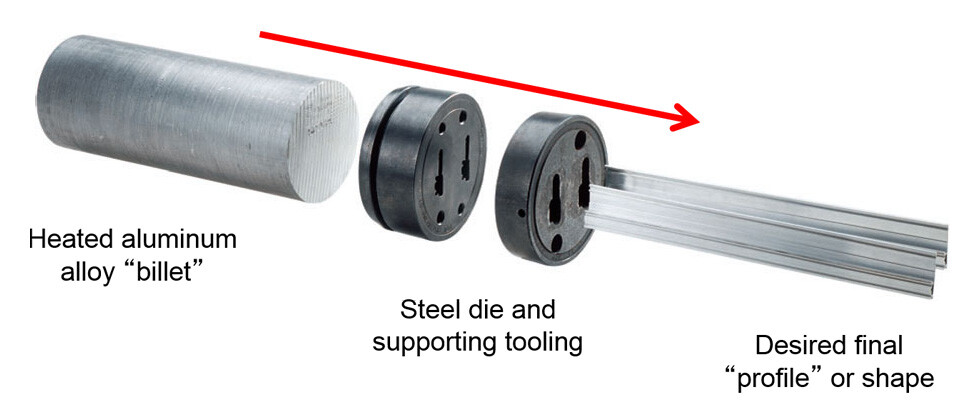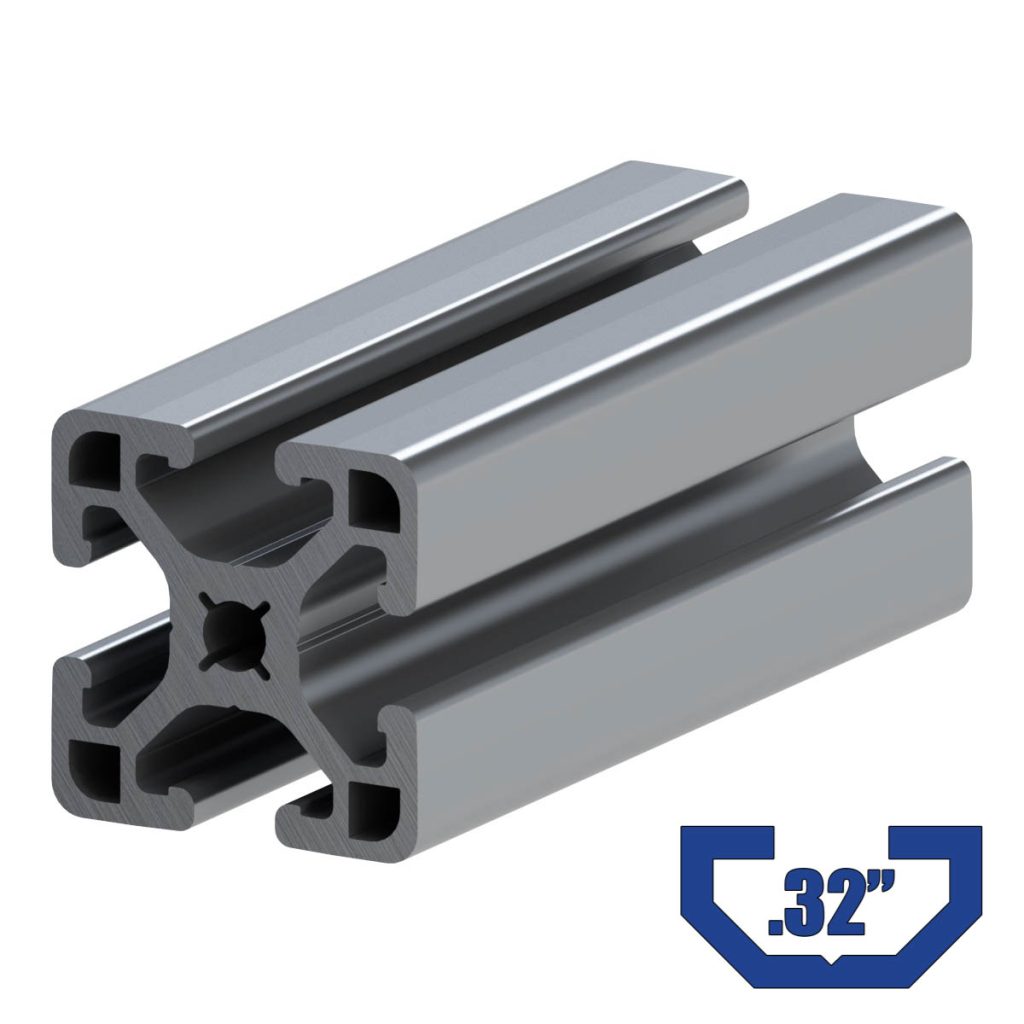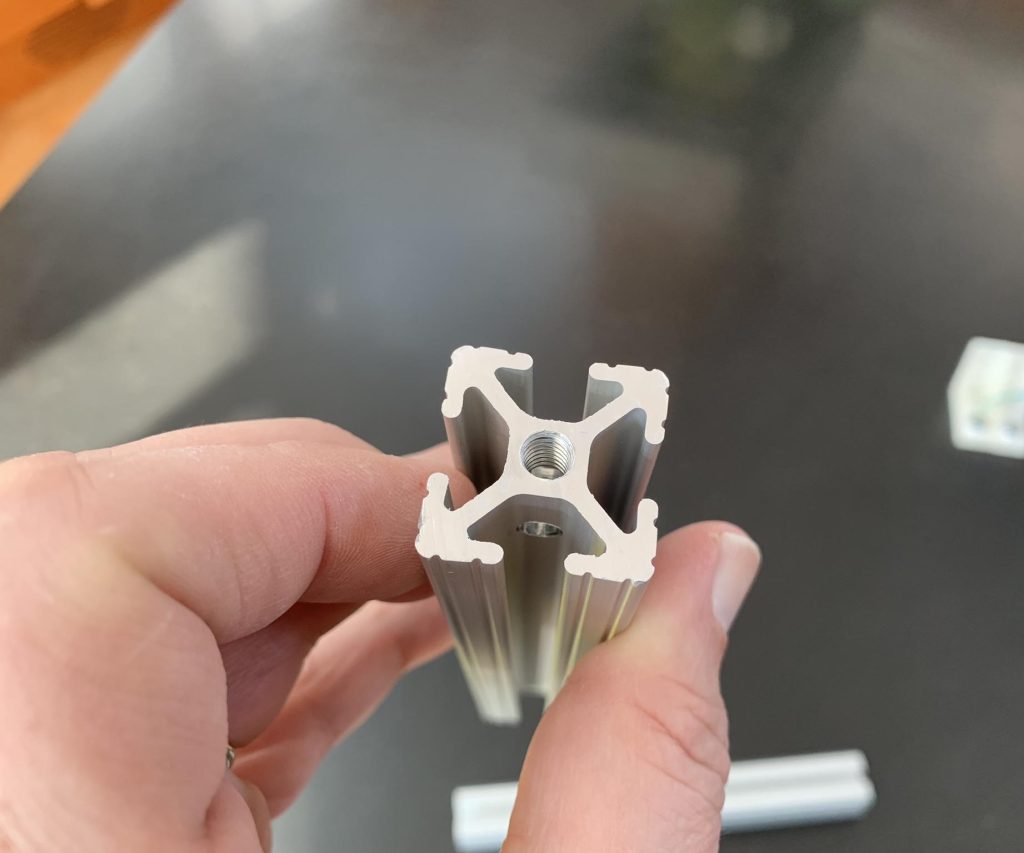Table of Contents
Aluminum extrusion is a versatile manufacturing process that allows you to create complex shapes and designs with ease. It’s an excellent choice for a wide range of applications, from building construction to automotive parts. However, if you’re new to the world of extrusion, you might be wondering how to get started. In this article, we’ll cover the basics of aluminum extrusion and show you how to use it to create high-quality, durable products.
Whether you’re a hobbyist or a professional, aluminum extrusion can help you bring your ideas to life. With its flexibility, precision, and cost-effectiveness, it’s no wonder that more and more people are turning to this process for their manufacturing needs. So if you’re ready to learn how to use aluminum extrusion, read on and discover the many benefits of this innovative technique.
How to Use Aluminum Extrusion?
Aluminum extrusion is a process of shaping aluminum into specific profiles with cross-sectional designs. It is widely used in various industries such as automotive, construction, aerospace, and more. The versatility of aluminum extrusion makes it a popular choice for many applications. In this article, we will discuss how to use aluminum extrusion and its benefits.
Understanding Aluminum Extrusion
Aluminum extrusion is a process where an aluminum billet is heated and pushed through a die to create a specific cross-sectional shape. The die determines the final shape of the profile. The extruded aluminum can be cut to any length required and can be finished in many ways, including anodizing, powder coating, and painting.
Aluminum extrusion has several benefits, including high strength-to-weight ratio, excellent corrosion resistance, and recyclability. It is also a cost-effective solution for mass production.
Designing Aluminum Extrusion Profile
Designing an aluminum extrusion profile requires a clear understanding of the requirements and the final application. The design should consider the size, shape, and tolerance required as well as the material properties.
The design process starts with creating a 2D or 3D drawing of the profile. The drawing should include all the dimensions, tolerances, and material specifications. Once the drawing is complete, it can be used to create a die for the extrusion process.
Choosing the Right Aluminum Alloy
Choosing the right aluminum alloy is critical in the extrusion process. The alloy used will determine the material properties, such as strength, corrosion resistance, and thermal conductivity.
There are several aluminum alloys available, each with its unique properties. The most commonly used alloys for extrusion are 6063 and 6061. 6063 is the most popular choice for general-purpose applications, while 6061 is preferred for structural applications.
Preparing the Aluminum Billet
Before the extrusion process, the aluminum billet needs to be prepared. The billet is heated to a specific temperature, depending on the alloy used. The temperature should be high enough to allow the aluminum to be pushed through the die but not too high to cause material damage.
Once the billet reaches the desired temperature, it is loaded into the extrusion press. The press applies pressure to push the billet through the die, creating the desired profile.
Finishing the Extruded Profile
After the extrusion process is complete, the profile needs to be finished. Finishing options include anodizing, powder coating, painting, and polishing.
Anodizing is a popular finishing option that provides a durable and corrosion-resistant surface. Powder coating is also a popular option that provides a durable and decorative finish. Painting is a cost-effective solution for finishing, while polishing provides a high-end finish.
Benefits of Aluminum Extrusion
Aluminum extrusion has several benefits that make it a popular choice for many applications.
– Lightweight: Aluminum extrusion has a high strength-to-weight ratio, making it an ideal choice for applications where weight is critical.
– Corrosion-resistant: Aluminum extrusion is naturally resistant to corrosion, making it ideal for outdoor and marine applications.
– Versatile: Aluminum extrusion can be shaped into any profile, making it a versatile solution for many applications.
– Sustainable: Aluminum extrusion is 100% recyclable, making it an environmentally friendly solution.
Aluminum Extrusion Vs. Other Materials
Aluminum extrusion has several advantages over other materials, such as steel and plastic.
– Weight: Aluminum extrusion is much lighter than steel, making it an ideal choice for applications where weight is critical.
– Corrosion resistance: Unlike steel, aluminum extrusion is naturally resistant to corrosion, making it ideal for outdoor and marine applications.
– Cost-effective: Aluminum extrusion is a cost-effective solution for mass production, making it a popular choice for many industries.
Applications of Aluminum Extrusion
Aluminum extrusion is widely used in various industries, including automotive, construction, aerospace, and more. Some common applications of aluminum extrusion include:
– Window frames and doors
– Curtain walls
– Solar panel frames
– Heat sinks
– Automotive frames and body parts
– Conveyor systems
– Industrial equipment frames
– Sign frames
Conclusion
Aluminum extrusion is a versatile and cost-effective solution for many applications. Understanding the extrusion process and choosing the right alloy and finishing options are critical in achieving the desired results. With its many benefits, aluminum extrusion is a popular choice for various industries and applications.
Frequently Asked Questions:
Aluminum extrusion is a versatile and cost-effective manufacturing process used to create a variety of products. If you’re new to aluminum extrusion, you may have some questions about how it works and how to use it. In this article, we’ll answer some of the most common questions about aluminum extrusion.
What is aluminum extrusion?
Aluminum extrusion is a manufacturing process that involves pushing a heated aluminum billet through a shaped die to create a specific cross-sectional shape. The extruded aluminum can then be cut into lengths and used to create a variety of products, from window frames to heat sinks.
The process is highly versatile and can be used to create complex shapes with tight tolerances. Aluminum extrusion is also a cost-effective manufacturing method, as it allows for high-volume production with minimal waste.
What are the benefits of using aluminum extrusion?
There are several benefits to using aluminum extrusion in manufacturing. First, the process allows for the creation of complex shapes with precise tolerances. This makes it an ideal choice for products that require a high degree of customization.
Aluminum extrusion is also a cost-effective manufacturing method. It allows for high-volume production with minimal waste, which can help to reduce manufacturing costs. Additionally, aluminum extrusion is a sustainable manufacturing process, as aluminum is fully recyclable and can be reused indefinitely.
What types of products can be made using aluminum extrusion?
Aluminum extrusion can be used to create a wide variety of products, from window frames to automotive parts. Some common products made using aluminum extrusion include heat sinks, LED lighting fixtures, and solar panel frames.
The process is highly versatile and can be used to create complex shapes and designs. This makes it an ideal choice for products that require a high degree of customization, such as medical equipment and industrial machinery.
What factors should be considered when designing a product for aluminum extrusion?
When designing a product for aluminum extrusion, there are several factors that should be taken into consideration. First, the designer should consider the shape of the product and whether it can be extruded with the desired cross-sectional shape.
The designer should also consider the tolerances required for the product and whether they can be achieved through the extrusion process. Additionally, the designer should consider the finish required for the product and whether it can be achieved through the extrusion process or if additional finishing steps will be required.
What is the process for creating a product using aluminum extrusion?
The process for creating a product using aluminum extrusion involves several steps. First, the designer creates a 3D model of the product using CAD software. The model is then used to create a die, which is used to shape the aluminum billet during the extrusion process.
The extruded aluminum is then cut into lengths and finished as required. This may involve additional machining, polishing, or coating. The finished product is then inspected for quality and shipped to the customer.
In conclusion, aluminum extrusion is a versatile and cost-effective manufacturing process that offers numerous benefits for a wide range of industries. By using aluminum extrusion, you can create complex shapes and designs that are both lightweight and strong, making it an ideal choice for everything from automotive parts to building facades.
When using aluminum extrusion, it’s important to understand the basics of the process and to work with an experienced manufacturer who can help guide you through the design and production stages. By following best practices and working with the right team, you can ensure that your products meet your specifications and exceed your expectations.
Whether you’re just starting out with aluminum extrusion or you’re looking to expand your capabilities, the possibilities are endless. With its many advantages and applications, aluminum extrusion is sure to remain a popular choice for manufacturers and designers alike.
Request a quote today!
[contact-form-7 id="1578" title="Contact form"]
Please compress the file into a ZIP or RAR file before uploading. Alternatively, send through your RFQ by email.
enquires@unitymanufacture.com





